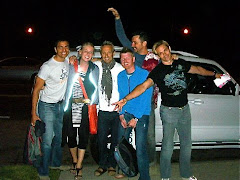 Long before Six Feet Under was even a glimmer in HBO’s eye, Forest Lawn was turning death into a theme park, where, if so desired, you don’t even need to view actual graves to have a splendid time. It’s a place where you can be surrounded by a sea of the departed and simultaneously maintain a healthy denial of mortality. No showy markers here, just small uniform stone plaques lying flush to the ground are all that is permitted. The real attractions are the “recreations” that were commissioned by FL over the years, everything from iconic pieces by Renaissance masters to duplicates of churches, as well as original works.
Long before Six Feet Under was even a glimmer in HBO’s eye, Forest Lawn was turning death into a theme park, where, if so desired, you don’t even need to view actual graves to have a splendid time. It’s a place where you can be surrounded by a sea of the departed and simultaneously maintain a healthy denial of mortality. No showy markers here, just small uniform stone plaques lying flush to the ground are all that is permitted. The real attractions are the “recreations” that were commissioned by FL over the years, everything from iconic pieces by Renaissance masters to duplicates of churches, as well as original works.A recent Sunday afternoon spent with friends impulsively exploring the grounds of the Forest Lawn cemetery in Glendale, the first in the chain established in 1906, turned into a quintessential Los Angeles experience, at least for one whom at times might be considered a condescending former New Yorker with an appetite for irony.
I had heard about the exact replica of Michelangelo’s David, carved from Carrara marble from the same quarry in Italy as the original. FL-Glendale is on its third copy, the previous two having been destroyed in earthquakes in 1971 and 1994. (The bronze copy at FL-Cypress has endured.) Having seen the original in Florence, I can indeed vouch for the Glendale David as an impressive accomplishment if you can get past the fact that it’s a copy and so has never been touched by the young master’s hands. (Michelangelo was 26 when he created it during the first few years of the 16th century. Take that, Hollywood celebrity youth of today with your towering oeuvre of reality shows, burger commercials and Youtube sex videos.)
I had also heard about The World’s Largest Painting, a.k.a. The Crucifixion, that measures 195 by 45 feet. What I didn’t know was that it can be viewed along with The World’s Second Largest Painting (The Resurrection) in a colossal building with a church façade that was built for displaying them named The Hall of the Crucifixion-Resurrection. There are hourly presentations in an enormous darkened theater with burgundy velvet seats that involve lights, curtains, video monitors, (though large still dwarfed by the size of the paintings,) and mewling narration that isn’t exactly anodyne, let alone nondenominational. It’s a hoot.
At another building called The Memorial Court of Honor, there is a stained-glass recreation of Leonardo DaVinci’s The Last Supper, “in vibrant, glowing and indestructible colors,” on view every half hour from 9 AM to 4:30 PM because, like the aforementioned paintings, why not turn looking at a static object into an event?
The grounds also have a museum that is currently displaying an exhibit entitled Fantasy Art, with sketches, cels and other artwork from mostly Disney animated features. It seemed a bit whimsical for a cemetery, but then again I had just seen a sculpture next to the Glendale David called The Mystery of Life, “expressly created for Forest Lawn." It was comprised of eighteen human figures that, according to the large carved stone plaque next to it, “depict the meaning of life.”
As I smirked to myself, it started raining, odd for August, and I suddenly noticed a giant column of smoke from a forest fire in the direction of the San Gabriel Mountains. I looked at the stone figures, their wet faces frozen in a panorama of emotions. The wind snapped, knocking over a plastic pot of dried out chrysanthemums that someone had set on one of the grave markers as my friends dashed to the car. I stayed behind a minute and watched the water streaming down the stone faces, before turning to run after them, away from The Mystery of Life.






